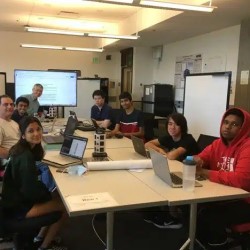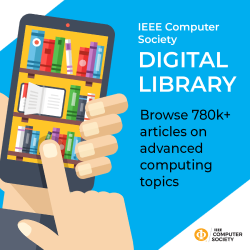Editor Guidelines for IEEE Computer Society Publications
Here, we provide the information you need to oversee peer review as an editor for an IEEE Computer Society publication.
The Editor Role
Associate editors, topical editors, and area editors (referred to here generally as editors) are members of the editorial board of the publication who manage the peer review of submitted manuscripts and ensure that the publication maintains the highest quality while adhering to the IEEE Computer Society’s policies and procedures. Other editorial board roles that do not oversee peer review, such as department editors, are described in the EIC Manual Section 2.A. Editors are selected on the basis of their expertise in one of the domains within the publication’s scope and by their professional standing in the community as supported by bibliometric indices or other available evaluative metrics.
The IEEE Computer Society requires that papers be selected for publication on the basis of merit and appropriateness. All technical manuscripts are submitted through our online peer review system, ScholarOne Manuscripts. This ensures that each submission can be tracked properly, will receive a fair and unbiased review, and is handled in an efficient and timely manner. If you are unfamiliar with the system, please view the ScholarOne Editor Basics video tutorial. If you have any problems using the system, please contact the publication’s peer review administrator.
The publication’s editor-in-chief (EIC) assigns an editor to handle the peer review process for a submission based on its subject area as well as editor availability. Assignments are distributed among the members of the editorial board as determined by the EIC to ensure fair and efficient handling. At times, editors covering popular subject areas may be more active than others. Any difficulties with workload should be reported immediately to the EIC and peer review administrator. When an editor is unavailable for two or more weeks, they should notify the peer review administrator of the absence to help manage new assignments coming through.
Editor Terms of Service
Editorial board members serve an initial two-year term, renewable for a second two-year term. Please refer to EIC Manual Section 2.A.1 for further details. The EIC makes the appointment with the consent of the Computer Society Publications Board or the cosponsored publication’s steering committee. During the formal term, the editor functions as a member of the editorial board for the publication; although the formal term of an editor may end according to the calendar, the informal term continues until all manuscripts assigned to that editor have been peer-reviewed and a final decision has been made.
Because editors are advised of the terms of service and responsibilities of the post, they are not relieved of such duties during any protracted absences or during sabbatical. In the case that a long absence is necessary, the editor must establish a means for their work as an editor to continue effectively, and the peer review administrator must be provided with full contact information as the editor moves from one location to another. In exceptional cases, the editor may request a suspension of the terms of service, which will be determined by the EIC. Even in such cases, it is expected that the editor will follow up with final recommendations on any pending manuscripts.
Conflicts of Interest
Editors must declare any potential conflict of interest (COI) to the EIC or AEIC within one week of the paper being assigned. COI is defined in IEEE Policies, Section 9.9 – Conflict of Interest (PDF). COIs include the following:
- Your PhD advisor, post-doctoral advisor, PhD students, and post-doctoral advisees, forever.
- Family relations by blood or marriage, or their equivalent, forever.
- People with whom you have collaborated in the past five years, including co-authors of accepted/rejected/pending papers and grant proposals.
- Funders (decision-makers) of your research grants, and researchers whom you fund.
- People (including students) who share or shared your primary institution(s) now or in the past five years.
- Other relationships, such as close personal friendship, that might affect your judgment or could be seen as doing so by a reasonable person familiar with the relationship.
Editors must notify the EIC or AEIC as soon as the potential COI is discovered. The paper will be assigned to a nonconflicted editorial board member who will oversee the paper through peer review and make all recommendations for the paper.
Preliminary/Conference Versions
If the authors provided a previously published version of their submission, please take the time—before assigning reviewers—to determine whether there has been sufficient new material added to warrant publication. Section 8.2.1.B.11 of the IEEE Publication Services and Products Board (PSPB) Operations Manual (PDF) specifies that authors should only submit original work that has neither appeared elsewhere for publication, nor which is under review at another publication. If authors used their own previously published material as a basis for a new submission, they are required to cite the previous work(s) and clearly indicate how the new submission offers substantively novel or different contributions beyond those of the previously published work(s). Please keep in mind that this rule applies to all aspects of the review process and must also be applied to all revisions and/or final versions submitted by the authors.
Concurrent/Dual Submissions
Submissions to IEEE Computer Society publications must represent original material. If it is determined that a paper appears in or will appear in any other publication before the editorial process is completed, the paper will be automatically rejected.
If the peer review administrator is informed of a possible concurrent submission, they will immediately contact the editor managing the submission and the EIC, as well as contacts at the other publication. If the other submission is still undergoing review, both publications exchange submissions for comparison. If the editors determine a clear case of concurrent submission, the manuscript is immediately rejected. The EIC sends the decision letter to the author.
Identifying Reviewers
The editor is responsible for identifying appropriate reviewers for the manuscript. Reviewers are principally identified through peer contact, the reviewer database in ScholarOne, or references listed at the end of the manuscript.
ScholarOne features a third-party search tool (Reviewer Locator) that will automatically return a list of potential reviewers based on external searches of an article’s metadata that match with the reviewers’ own publications or prior reviews. This can help widen the pool of potential reviewers and provide insight into an individual’s qualifications beyond simple keyword searches. Nevertheless, editors must assess these qualifications in terms of how well they align with the article’s topic and focus.
Note that the Computer Society Digital Library and IEEE Xplore® can also be used effectively to augment the ScholarOne Reviewer Locator and reference list. In general, we do not recommend using author-recommended reviewers, as the results have the potential for bias and may compromise the confidentiality of the review process.
Selecting and Inviting Reviewers
Once a reviewer is chosen, the editor should check for profile completeness and inaccuracies in the ScholarOne database before assigning the paper to them. Corrections to the reviewer’s information must be communicated to the appropriate peer review administrator prior to assignment.
One way to ensure timely reviews, and to avoid overwhelming individual reviewers, is to limit requests/assignments to no more than two reviews at any given time. The ScholarOne Reviewer Locator will display the number of current assignments each individual has, as well as the number of days since their last assignment.
The editor should invite at least three reviewers, as that is the recommended number of reviews (IEEE requires at least two reviews). Editors may select more than three reviewers to ensure that the required number of completed reviews can be achieved by the deadline. The editor should select and invite reviewers in ScholarOne as soon as possible, but definitely within a two-week period.
We have found that reviewers are more likely to agree to review when they are contacted personally by the editor. In addition, when you anticipate needing reviewers for submissions, sometimes approaching them in advance can be helpful in securing their acceptance of the assignment.
Reviewer Reminders
As the editor, you play a vital role with helping papers move through the review process. This is especially true if there are difficulties with getting enough reviewer feedback to make a decision.
ScholarOne sends up to three automated reviewer reminders. As the editor, you will be copied on the third reminder. Personal reminders are very effective in achieving a response from a late reviewer, so please use this third automated reminder as a trigger for you to follow up with the reviewer. To do so, click on their name link under the review section of the paper’s manuscript details.
To see submissions that may require a personal reminder from you, check the papers listed in the “Overdue Reviewer Scores” section of your ScholarOne Editor Center dashboard.
Reviewer Assessment
When assessing the reviews, ask yourself, “Does the reviewer provide specific feedback in their ‘Public Comments’ (which are comments for the author) and ‘Confidential Comments to the Editor’ for a recommendation to be made?” We recommend reading the review reports to make sure they meet appropriate standards of quality, thoroughness, and professionalism. If a review lacks sufficient detail or is otherwise incomplete, please ask the reviewer for more information or invite a new reviewer, so that the recommendation and decision are substantiated by these comments.
It is unacceptable for a reviewer to require additional citations for the sole purpose of influencing bibliometric measures of either an individual or a periodical, as mentioned in the IEEE PSPB Operations Manual (PDF) Section 8.2.2.A.4.
Each completed review will contain an evaluation form that you can use to rate the review based on timeliness and quality. This assessment will contribute to the individual reviewer’s cumulative R-score. The R-score is displayed as part of reviewer search results and can help editors assess past performance when assigning reviewers to future submissions.
Making a Recommendation
Once the required reviews are complete, you will be prompted to make a recommendation in ScholarOne. Please read our guide for making recommendations here.
Peer Review Schedules
For an overview of the timeline for submission, review, revision, and production, please see our peer review schedule guide here.






